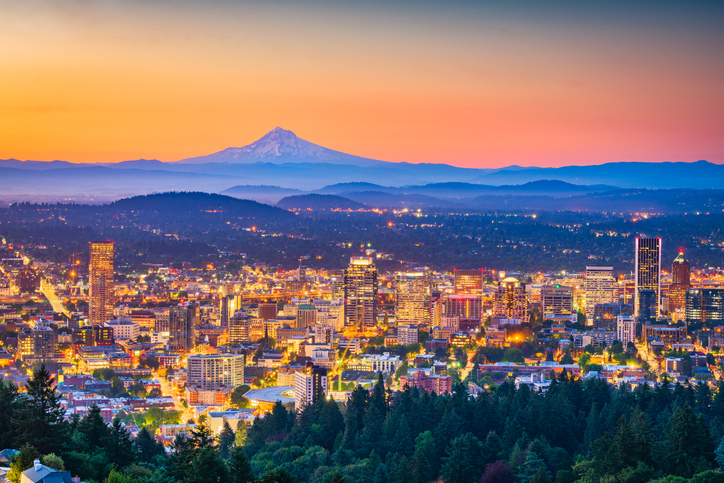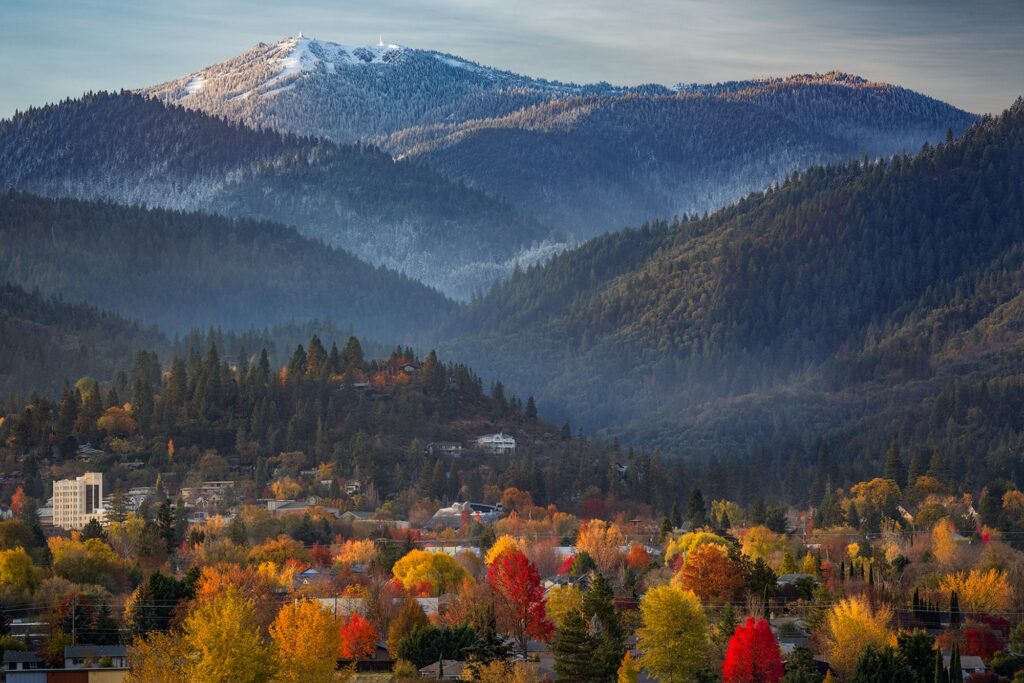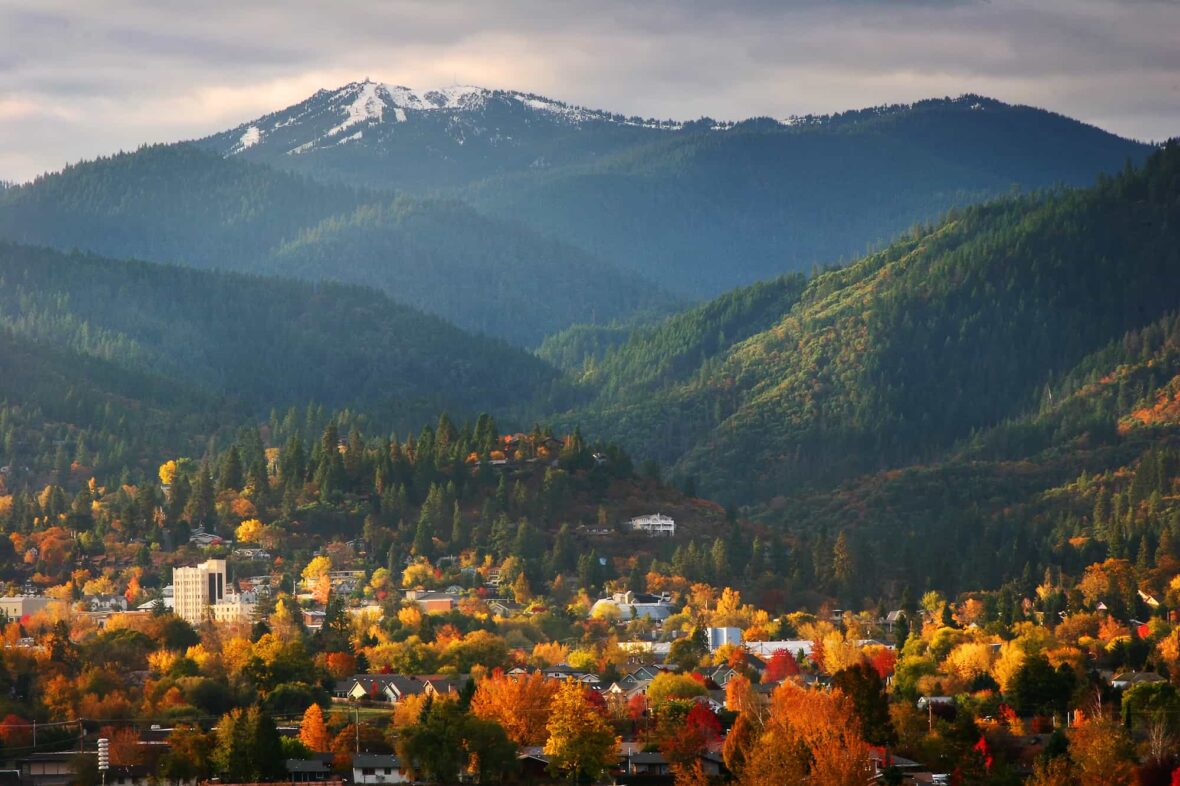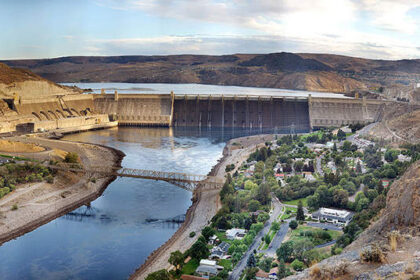Ashland is a city in Jackson County, Oregon, United States. Take a look below for 25 awesome and interesting facts about Ashland, Oregon, United States.
1. It lies along Interstate 5 approximately 16 miles (26 km) north of the California border and near the south end of the Rogue Valley.
2. The city’s population was 20,078 at the 2010 census and was estimated to be 21,281 as of 2019.
3. The city is the home of Southern Oregon University (SOU) and the Oregon Shakespeare Festival (OSF).
4. These are important to Ashland’s economy, which also depends on restaurants, galleries, and retail stores that cater to tourists.
5. Lithia Park along Ashland Creek, historic buildings, and a paved intercity bike trail provide additional visitor attractions.
6. Ashland, originally called “Ashland Mills”, was named after Ashland County, Ohio, the original home of founder Abel Helman, and secondarily for Ashland, Kentucky, where other founders had family connections.
7. Ashland has a mayor-council government assisted by citizen committees.
8. Historically, its liberal politics have differed, often sharply, with much of the rest of southwest Oregon.
9. Prior to the arrival of white settlers in mid-19th century, the Shasta people lived in the valley along Ashland Creek approximately where today’s city is located.
10. Early Hudson’s Bay Company hunters and trappers following the Siskiyou Trail passed through the site in the 1820s. In the late 1840s, mainly American settlers following the Applegate Trail began passing through the area.

11. By the early 1850s, the Donation Land Claim Act brought many to the Rogue Valley and into conflict with its native people. These often violent clashes, known ultimately as the Rogue River Wars, continued until 1856.
12. In 1851, gold was discovered at Rich Gulch, a tributary of Jackson Creek, and a tent city grew on its banks, today’s Jacksonville.
13. Settlers arrived in the Ashland area in January 1852, including Robert B. Hargadine, Sylvester Pease, Abel D. Helman, Eber Emery, and others. Helman and Hargadine filed the first donation land claims in Ashland.
14. Helman and Emery built a sawmill along what was then called Mill Creek to turn timber into lumber for settlers.
15. In 1854, they and another settler, M. B. Morris, built a second mill, Ashland Flouring Mills, to grind local wheat into flour. The community around the mill became known as “Ashland Mills”. A post office was established in Ashland Mills in 1855 with Helman as postmaster.
16. During the 1860s and 1870s the community grew, establishing a school, churches, businesses, and a large employer, Ashland Woolen Mills, which produced clothing and blankets from local wool.
17. In 1871, the Post Office dropped “Mills” from Ashland’s name. In 1872 Reverend J. H. Skidmore opened a college, Ashland Academy, a predecessor of Southern Oregon University.
18. In 1887, Portland, Oregon, and San Francisco, California, were joined by rail at Ashland. Until 1926, when most rail service began taking a different route (east through Klamath Falls to avoid the steep grade through the Siskiyou Mountains), Ashland thrived on rail trade of local products, including pears, peaches, and apples.
19. In 1908 the Women’s Civic Improvement Club petitioned for the creation of community space along Ashland Creek, which became Ashland Canyon Park. The discovery of lithia water near Emigrant Lake around the same time led to a plan to establish a mineral spa at the park. Voters approved bonds to pay for the project, which included piping the mineral water from its source to Ashland.
20. The town engaged John McLaren, landscape architect of San Francisco’s Golden Gate Park, to design the park, renamed Lithia Springs Park, later shortened to Lithia Park. Although the park was popular, the mineral spa plans proved too expensive for local taxpayers and were abandoned in 1916. Meanwhile, entrepreneurs took to bottling and selling mineral waters from the area’s springs.

21. During the Fourth of July celebration in 1935, Angus L. Bowmer arranged the first performances of what would become the Oregon Shakespeare Festival. The festival grew during the 20th century, and has become an award-winning and internationally known regional theater company.
22. Many of Ashland’s historic buildings have been preserved and restored. The city has 48 individual structures and two historic districts (the Ashland Railroad Addition District and the Downtown District) on the National Register of Historic Places.
23. The structures include the Enders Building (home of the Columbia Hotel), which from 1910 to 1928 contained the largest mercantile establishment between Sacramento and Portland.
24. The Oregon Shakespeare Festival has grown from a summer outdoor series in the 1930s to a season that stretches from February to October, incorporating Shakespearean and non-Shakespearean plays at three theaters.
25. The annual Ashland New Plays Festival (ANPF) is a nonprofit organization that encourages playwrights to develop new work through public readings. Each year, the ANPF holds an international competition that winnows hundreds of submissions to four plays that are read to live audiences by professional actors during a five-day festival in October.




